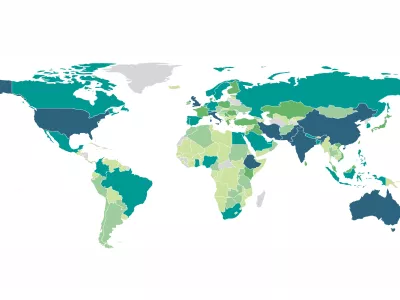Newsroom
Contact an expert
For media inquiries, please include your deadline in the request and contact ihmemedia@uw.edu.
IHME in the news
Read what major media outlets are saying about our work.
Insights blog
Find expert insights, commentaries, and researcher explanations of their work.
Fostering bicycle safety for human and planetary well-being
Think Global Health
June 3, 2025
Commentary
Using AI to track gender-based violence
Acting on Data
GBD 2023 Assessment Workshop for Italy
Global Burden of Disease (GBD)
GBD is the single largest and most detailed scientific effort ever conducted to quantify levels and trends in health. It provides a comprehensive picture of mortality and disability across countries, time, age, and sex, incorporating over 350 diseases and injuries in 204 countries.

Videos
Research
Read our peer-reviewed research published in scientific journals.












